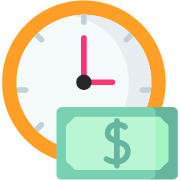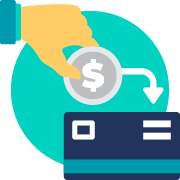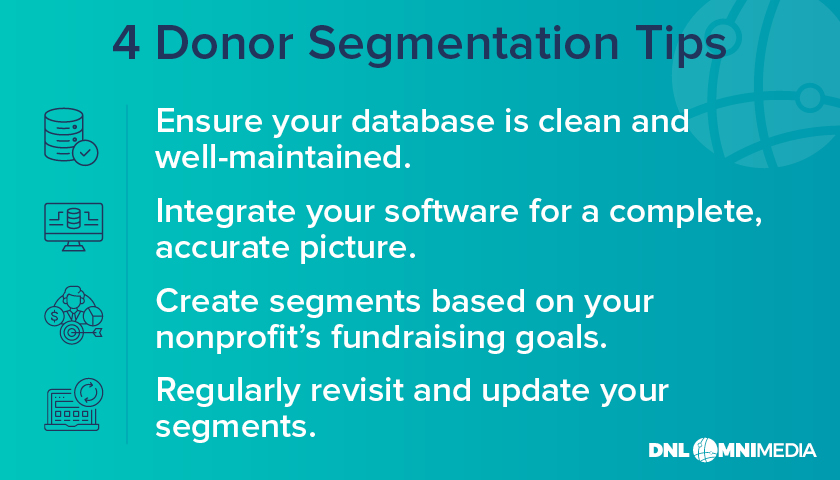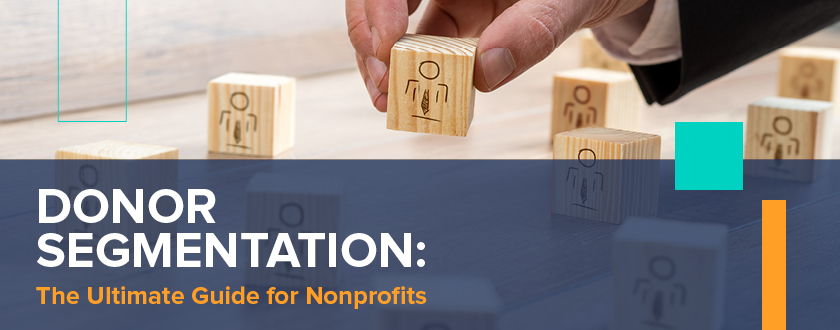Nonprofits, just like yours, are relying on technology for operations more than ever before. From your online fundraising software to your virtual event software, each of your solutions is generating extremely valuable data on how your supporters like to engage with your mission.
Analyzing the data provided by nonprofit technology can help you optimize your fundraising and stewardship efforts over time to raise more money and build stronger relationships. However, that’s not the case if you’re dealing with a massive database full of seemingly random data points.
Examining donor data as a whole isn’t helpful— you must segment it to discover actionable insights. This act of making donor data useful through grouping and sorting it is called donor segmentation.
In this guide, we’re going to explore donor segmentation through the following points:
- Covering the Basics of Donor Segmentation
- How does donor segmentation work?
- Donor Segmentation Cheat Sheet: Top 4 Tips
Are you ready to glean new insights from your donor data? Let’s get started.
Covering the Basics of Donor Segmentation
What is donor segmentation?
Ask any modern fundraising or marketing professional about the best tactics to secure donations, volunteer hours, or other support, and there’s a decent chance donor segmentation will be mentioned in the lineup.
But, to understand the value of donor segmentation, you first need to understand what the process is.

Donor segmentation is the act of organizing the donors in your database into groups— segments— based on their shared characteristics. Donor segmentation fundraising involves adjusting your fundraising efforts based on the information unveiled by these segments.
How can segmented donor data impact your fundraising and retention strategies?
Donor segments give your nonprofit the information you need to communicate with donors in a way that’s impactful and meaningful for each specific group. For example, by examining segments, you can:
- Ask for the ideal gift amount
- Provide for certain giving channels
- Use the right outreach method and channel
- Discover and re-engage donors at risk of lapsing
- Tailor your outreach to reflect donor history
How can segmentation help you accomplish this? Well, let’s look at one example: Asking for the ideal gift amount.
Rather than broadcasting the same information across your entire donor base, you can send content tailored to specific segments of your constituency. So, you’d create segments based on average gift amount and make gift solicitations accordingly. All mid-tier donors receive mid-tier gift solicitations, all major donors receive larger gift solicitations, and so on.

With segments, your supporters are only encountering content that they’re most likely to respond to and engage with, rather than a plethora of information that may be irrelevant to their experience with your nonprofit. This type of nonprofit analytics is valuable for both securing gifts and stewarding donors in the long run.
How does donor segmentation work?
Donor segmentation works by collecting data on your supporter base and organizing them into groups. If you have data-savvy team members in-house, this might be a task you tackle independently. That said, many nonprofits choose to work with nonprofit consulting firms to optimize their tech stack to collect and segment donor data accordingly.
Regarding which segments your nonprofit should focus on, that comes down to your goals. Let’s explore a few common segment types and how they could impact your fundraising and stewardship efforts for the better.

8 Segments to Organize Your Database
Engagement Type

One way to segment your supporters is by considering their past engagement with your nonprofit. For example, this could cover:
- Peer-to-peer fundraisers
- Volunteers
- Donors
- Advocates
This segment is valuable when it comes to choosing how to engage a supporter going forward. Would they respond better to a gift solicitation, an event invite, or something else?
Gift Type

Consider segmenting donors by the type of gift they make, such as:
- One-time donor
- First-time donor
- Major donor
- Recurring donor
- Year-end donor
This segment can be especially useful when deciding how to communicate with a donor. For example, you’ll want to reflect the past giving history of a recurring donor, while you might want to share educational information with a first-time donor.
Demographics

You may choose to segment based on certain demographic factors, such as:
- Age
- Location
- Gender
There are a few ways this could impact your fundraising. For example, younger generations may be more interested in your nonprofit’s mobile app, while locations with a high saturation of your supporters would be great places to hold fundraising events.
Social and Business Connections

There is value in segmenting supporters by their connections with others, such as their:
- Employer
- Investments
- Familial connections
- Friendships
When you discover these connections, you can use them in your outreach. For example, you can include whether a donor’s gifts would be match-eligible based on their employment information.
Interests

There are a variety of motivations driving supporters of your cause. Consider segmenting by interests, such as:
- Advocacy opportunities
- Education about your cause
- Volunteer opportunities
With these segments, you can present opportunities to get involved to the supporters most interested in engaging in that manner. For example, you may have younger generations that are incredibly interested in advocacy opportunities, but not as interested in donation opportunities.
Giving Preferences

When it comes to donating, there are a variety of channels and tenders that your supporters may prefer. Consider segmenting based on giving preferences, including:
- Giving Channel: peer-to-peer fundraisers, online giving pages, crowdfunding, etc.
- Giving Tender: credit/debit card, ACH direct deposit, cash, check, digital payment options such as Apply Pay, etc.
With these segments, you can discover the giving preferences that are most common in your supporter base. Then, you can further optimize those options to provide the best experience possible. For example, if you have donors giving via peer-to-peer fundraising, you may choose to implement virtual peer-to-peer fundraising.
Communication Preferences

Segmenting by communication preferences includes segmenting by:
- Which channels a supporter prefers
- How frequently a supporter wants to be communicated with
You may discover that more of your supporters prefer email marketing communications, with fewer checking in with your social media networks. Or, vice versa! The point is that you’ll be able to discover the most popular communication methods and frequencies, which supporters prefer which methods, and optimize to communicate with each segment in the ideal manner.
Engagement Level

Last, but certainly not least, you can segment donors by the level of engagement they’ve had with your organization in the past. This includes:
- Lapsed donors
- Regular engagement
- Sporadic engagement
- Events-based engagement
Past engagement can have a huge impact on how you interact with supporters going forward. The stewardship plan for a lapsed, or lapse-risk donor is significantly different than that of a regular, steady supporter of your organization.
Donor Segmentation Cheat Sheet: Top 4 Tips
We’ve covered the basics of segmentation and eight common segments your team can use to understand your donors. Now, let’s cover a few tips and best practices to help your organization be successful in its donor segmentation efforts.


Ensure your database is clean and well-maintained.
To segment your donors, you first need data to organize. But, not just any donor data— clean, accurate data contained in a well-maintained database.
Data hygiene is the ongoing process of keeping your database as accurate as possible. Something as simple as one missed keystroke can result in inaccurate data and, with it, inaccurate donor segments.
There are two main facets of nonprofit data hygiene:
- Conducting an initial clean-up. If your team hasn’t directly prioritized data hygiene in the past, it’s best to conduct an initial audit and clean-up to ensure you’re starting on level ground. Check for errors such as nonstandard data entries, incorrect entries, incomplete entries, and duplicate entries.
- Creating ongoing data management standards. One initial clean-up isn’t enough to have an effective database. You need to create ongoing standards and communicate them across your team. For example, how will addresses be standardized, so they’re entered in the correct format, every time? There should be rules for handling errors when they’re noticed, as well.
Nonprofit data management can be overwhelming. After all, as a nonprofit professional, you’re working with more tech solutions to conduct operations than ever before. If your database is drowning in disorganized data, it might be useful to hire a consultant that can assist with nonprofit data management.

Integrate your software solutions for a complete, accurate picture.
As you may have noticed from the eight segment ideas shared earlier in this piece, donor segmentation draws data from a variety of sources. For example, let’s look at just one potential segmentation strategy: Engagement Type.
This segmentation strategy could include segments for peer-to-peer fundraisers, volunteers, donors, advocates, and more. In this segment alone, you could be referencing data from your P2P fundraising solution, your volunteer management software, your online giving solution, and your advocacy software.
If you have to manually pull this information from each disparate data source, it will not only take a long time but also leave plenty of room for error. This is why it’s crucial to integrate your software solutions for effective donor segmentation.
With seamless connections between your various tech solutions, you gain a full picture of your organization’s data. Ideally, this data should flow into your constituent relationship management (CRM) system. We recommend working with a consultant to make sure these connections are seamless, whether you’re working with smaller solutions or a robust CRM such as Blackbaud’s or Salesforce’s solutions. This will ensure you’re positioned to use your data to the fullest.

Create segments based on your nonprofit’s fundraising goals.
Earlier in this piece, we discussed a wide variety of segmentation strategies that your team could use to organize your donors. That said, if you spend all of your efforts simply creating a ton of segments, you’ll have a variety of groups that are of little use for your team.
We recommend that you build your segmentation strategy based on your nonprofit’s goals. For example, if your goal is to:
- Re-engage lapsed donors, you might segment by past engagement history and engagement frequency.
- Steward major donors, you might segment by gift type, engagement level, and social and business connections.
- Discover opportunities for donor upgradation, you might segment by engagement level, interests, and engagement type.
- Raise more through online fundraising, you might segment by interests, giving preferences, and communication preferences.
As a nonprofit, you don’t have the time or resources to waste on research that’s not aligned with your goals. Build your segments off of your goals, and you’ll have greater success.

Regularly revisit and update your segments.
It may seem like segmentation is a process of organizing your donors and leaving it there. But, just as data hygiene is an ongoing process, so is segmentation.
Your donor segments should be regularly assessed against a few questions:
- Are segments still aligned with your nonprofit’s goals?
- Are segments up-to-date with the latest donor data to enter your system?
- Should the strategies for engaging each segment be updated?
Essentially, you should revisit that strategy dictating your donor segmentation as well as the segments themselves. This is to ensure both are working toward your goals.
Over time, as you invest more time and strategy in data segmentation, you’ll be able to identify valuable areas of overlap much more effectively. For example, suppose you see that major donors are of a certain age and have similar engagement histories and interests over time. In that case, you’ll be able to immediately hone in on individuals who sit at or near the intersections of those segments. So, be prepared for your segmentation strategy to evolve as the available data and your goals do.
This is another area where it might be helpful to work with a nonprofit strategy consultant. This consultant can help your team set up the infrastructure for donor segmentation and craft a digital fundraising strategy to put those segmented insights into action, both now and as your strategy evolves.
Donor segmentation is key to engaging your nonprofit’s audience in a more impactful, targeted manner. With it, you can contact the right supporters with the exact outreach they’re most likely to be interested in.
However, effective donor segmentation is dependent on clean data and a strong tech stack. To learn more about optimizing your tech stack for this effort, contact DNL OmniMedia today.
For now, continue exploring the intersection of donor data and effective fundraising with the following additional resources:
- 5 Nonprofit Data Management Strategies for Smarter Fundraising. Donor segmentation relies on your organization having a clean, accurate database. Explore our top strategies for nonprofit data management in this guide.
- Nonprofit Technology: Why, What & How of Smarter Fundraising. Interested in improving your nonprofits tech stack for more effective fundraising? Review this guide to the many types of software available for your team.
- Creating a Nonprofit Digital Strategy: 7 Steps for Success. Starting from the beginning with building your organization’s digital strategy, or simply needing a refresh? Check out this guide for success.






